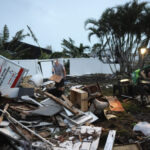Strict underwriting controls imposed on the California State Compensation Insurance Fund (SCIF) are one bright spot in a gloomy scene for workers’ compensation writers in the state, according to a new report by Standard & Poor’s Ratings Services. For employers, the restrictions on SCIF will make coverage even harder to come by.
Although average workers’ compensation premium rates in California were 50 percent higher in the third quarter of 2002 than the 2001 average, insurers in the state have in total a $14 billion reserve shortfall to make up because of severe underpricing in the second half of the late 1990s. That is almost as much as the entire premium collected in the state in 2002.
California was host to several workers’ compensation insolvencies in
2002, by which time insurers that as recently as 1994 accounted for one-third of the market were either “being liquidated or in some form of regulatory supervision,” according to The Workers’ Compensation Insurance Rating Bureau of California (WCIRB).
But buyers of coverage are also having an increasingly difficult time of it. The Standard & Poor’s report describes workers’ compensation business as “an economic anomaly – at once too cheap to be profitable and too expensive to be affordable.”
And capacity shortage could reach critical proportions in California, now that the state’s insurance commissioner, John Garamendi, has put the brakes on SCIF’s breakneck expansion of market share (to about 45 percent of California premiums in 2002 from less than 20 percent in 2000).
“A major availability crisis is now at hand,” said Jason Jones, an
analyst in Standard & Poor’s insurance ratings.
The report, entitled “Can U.S. Workers’ Compensation Business Emerge From California’s Shadow?”, also takes an extensive look at the national workers’ compensation picture, where the reserving shortfalls are described as “a close second to asbestos.”
It is available to RatingsDirect subscribers at www.ratingsdirect.com.
Was this article valuable?
Here are more articles you may enjoy.

 Report Shows Cargo Theft Risk at All-Time Highs as Memorial Day Weekend Nears
Report Shows Cargo Theft Risk at All-Time Highs as Memorial Day Weekend Nears  Cars Are Getting Smarter. Why It Matters for Claims Professionals
Cars Are Getting Smarter. Why It Matters for Claims Professionals  Here Comes Another Busy Atlantic Hurricane Season, But Will It Be as Crazy as 2024?
Here Comes Another Busy Atlantic Hurricane Season, But Will It Be as Crazy as 2024?  Two Chevron Workers Die of Injuries From Angola Platform Fire
Two Chevron Workers Die of Injuries From Angola Platform Fire 